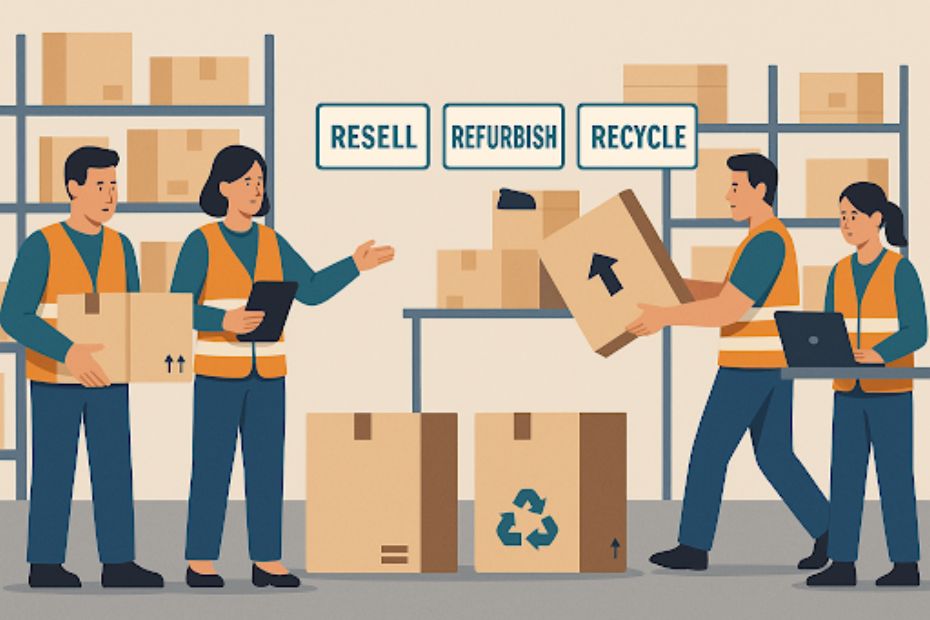If you’re managing reverse logistics, you already know it’s not just about handling returns—it’s about efficiency, customer satisfaction, and protecting your margins. From faulty products to seasonal surpluses, reverse logistics presents challenges that can quickly drain your resources unless you’re proactive. In this article, you’ll walk through six actionable strategies to streamline your reverse logistics operations while maintaining service quality and improving your supply chain performance.
1. Build Clarity into Your Return Policy
A return should never feel like guesswork. When your return policy is ambiguous or difficult to access, it frustrates customers and slows down internal processing. You need to craft clear, accessible, and user-friendly policies that reflect both your operational capabilities and your commitment to service.
Think of your policy as part of your customer experience. When it’s straightforward, with well-defined timelines, conditions, and instructions, it lowers return volume and reduces avoidable inquiries. And when your staff understands the policy just as clearly, it shortens cycle times and minimizes friction across departments. Well-communicated policies translate to faster resolutions, fewer chargebacks, and smoother returns from start to finish.
2. Integrate Smart Tech for Real-Time Visibility
Tracking returns manually won’t cut it in today’s supply chain environment. If you haven’t already invested in digital tools—RFID, barcodes, and reverse logistics platforms—you’re working with blind spots. Real-time tracking gives you the visibility to monitor every item as it moves back through the chain.
You can use software to automate label creation, track receipt of goods, and categorize items for refurbishment, resale, or disposal. This data improves your forecasting models and flags recurring product defects or supplier issues. Most importantly, real-time insight allows you to intervene early, whether you need to redirect a high-value return to a secondary market or notify customer service before a dispute escalates.
3. Use Return Data to Fix What’s Broken
Every return tells a story. If you’re not analyzing return data, you’re missing key information that could tighten up your supply chain. Look closely at your product return reasons—are customers returning items because of sizing, damage, unclear descriptions, or misaligned expectations?
When you spot trends, you can act. You might refine product specs, adjust packaging, retrain warehouse staff, or rethink a supplier contract. Don’t just accept returns as a cost of doing business. Let them guide quality control and continuous improvement efforts. Over time, this kind of analysis can reduce the volume of returns altogether.
4. Collaborate with the Right Logistics Partners
If reverse logistics isn’t your strong suit internally, you’re better off working with providers who specialize in it. Third-party logistics (3PL) partners with reverse capabilities can help you process returns faster, reduce transportation costs, and handle repackaging or recycling.
A good partner helps you maintain compliance with e-waste laws, stay aligned with sustainability goals, and optimize routing to reduce fuel usage. Whether you’re dealing with high volumes or niche returns like hazardous materials or electronics, the right logistics partner extends your capabilities without overburdening your in-house team.
5. Assign Ownership to a Reverse Logistics Team
Reverse logistics needs more than a vague plan—it needs leadership. Assigning a dedicated team to manage returns brings focus and consistency. When this team monitors workflows, tracks KPIs, and updates procedures, you gain control over a process that often becomes fragmented.
This team can set standards for inspection, refurbishment, and secondary market re-entry. They also provide valuable cross-functional insight by coordinating with customer service, finance, and supply chain operations. With reverse logistics accounted for as a line item, not an afterthought, you’re better equipped to reduce total cost and elevate customer satisfaction.
6. Rethink Returns Through a Sustainability Lens
You can’t ignore the environmental costs of reverse logistics. Every mile driven and every product discarded impacts your sustainability metrics and brand reputation. By focusing on refurbishment, recycling, and resale, you make returns part of your circular economy strategy.
Start with packaging that’s easy to reuse or recycle. Prioritize refurbishment and donation when possible, and look into local return centers to cut down on long-haul transport. Some of your returns can be turned into value—whether by repackaging for clearance sale, harvesting components, or repairing for resale. If you treat sustainability as a strategic lever, it will guide smarter routing, better inventory reuse, and lower landfill costs.
Key Strategies for Effective Reverse Logistics
- Define and communicate a clear return policy
- Use tracking systems for real-time visibility
- Analyze return data to improve processes
- Partner with experienced 3PL providers
- Create a team for reverse logistics management
- Align returns with sustainability goals
In Conclusion
Reverse logistics doesn’t have to be a drain on your resources. With the right strategies, you can turn your return operations into a source of savings and value. From leveraging real-time data to partnering with the right providers and embedding sustainability, you’re in a position to build a more resilient supply chain. When you treat reverse logistics as a strategic function, not just a support task, it becomes a competitive edge that improves both service and profitability.
If you’re interested in more insights on supply chain strategy and logistics innovation, check out my latest posts on Medium. I regularly share practical perspectives for forward-thinking professionals.

